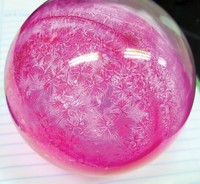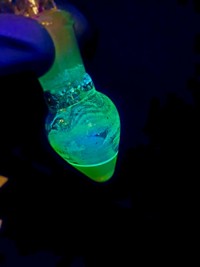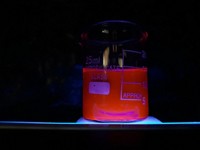Advertisement
Grab your lab coat. Let's get started
Welcome!
Welcome!
Create an account below to get 6 C&EN articles per month, receive newsletters and more - all free.
It seems this is your first time logging in online. Please enter the following information to continue.
As an ACS member you automatically get access to this site. All we need is few more details to create your reading experience.
Not you? Sign in with a different account.
Not you? Sign in with a different account.
ERROR 1
ERROR 1
ERROR 2
ERROR 2
ERROR 2
ERROR 2
ERROR 2
Password and Confirm password must match.
If you have an ACS member number, please enter it here so we can link this account to your membership. (optional)
ERROR 2
ACS values your privacy. By submitting your information, you are gaining access to C&EN and subscribing to our weekly newsletter. We use the information you provide to make your reading experience better, and we will never sell your data to third party members.
Safety
Chemistry In Pictures
Chemistry in Pictures: Club Med dermatitis
by Craig Bettenhausen
July 14, 2020

On a chemistry channel like this, you’d probably think this is going to be about a chemist who was exposed to some dangerous substance. And you’re right, except common limes sprayed the chemical at hand onto chemist-turned-science-writer Tien Nguyen while she was making margaritas. Lime peels contain a set of photosensitizing chemicals called furanocoumarins, a category that includes bergapten (5-methoxypsoralen, shown). Members of the carrot family, other citrus peels, and a number of other plants also have photosensitizing furanocoumarins.

The phenomenon, known as phytophotodermatitis, and its symptoms are similar to conventional sunburn, but the mechanism is different. Furanocoumarins can penetrate skin cells. When excited by UV-A light (315–400 nm), they bind to RNA and DNA. More UV excitation of that adduct creates cross-links, leading to cell death. In the presence of oxygen, free radicals can form, causing more damage to skin cells.
The former reaction stimulates tyrosinase to make melanin, darkening the skin. Dermatologists sometimes exploit this chemistry, carefully, to treat pale patches of skin from conditions such as vitiligo.
Ack!
Limes and carrots can fry your skin? Yes. But you need both the furanocoumarins and UV light to be present at the same time. So wash your hands well after cooking—or bartending—and wear sunblock and you’ll be fine, Nguyen says.
Read more about phytophotodermatitis here: (Mil. Med. 2009, DOI: 10.7205/MILMED-D-01-7208).
Credit: Courtesy of Tien Nguyen
Do science. Take pictures. Win money. Enter our photo contest here.





Join the conversation
Contact the reporter
Submit a Letter to the Editor for publication
Engage with us on Twitter